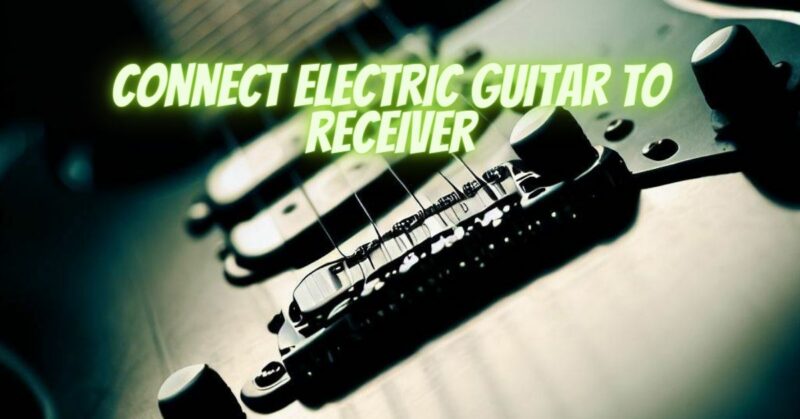If you’re an electric guitarist looking to amplify your sound and have a home audio setup with a receiver, you might wonder how to connect your electric guitar to it. While receivers are typically used for powering speakers in a home audio system, they can also serve as a functional amplifier for your electric guitar. In this article, we’ll guide you through the process of connecting your electric guitar to a receiver, allowing you to play and enjoy your music through your home speakers.
Connecting Your Electric Guitar to a Receiver:
To connect your electric guitar to a receiver, you’ll need a few essential components:
- Guitar Cable: Use a standard guitar cable with a 1/4-inch (6.35mm) plug on one end and the appropriate connector on the other end that matches the input on your receiver.
- Preamp Pedal (Optional): Since electric guitars produce weaker signals than line-level audio sources, you may need a preamp pedal to boost the guitar signal before connecting it to the receiver.
- Effects Pedals (Optional): If you want to add effects to your guitar sound, you can connect effects pedals between your guitar and the receiver.
Steps to Connect Your Electric Guitar:
- Check Input Compatibility: Identify the input options on your receiver. Most receivers have analog audio inputs that accept line-level signals, which are suitable for connecting an electric guitar.
- Turn Off Your Receiver: Before making any connections, ensure your receiver is turned off to avoid any potential damage to the speakers or equipment.
- Connect Your Guitar: Plug one end of the guitar cable into your electric guitar’s output jack and the other end into the appropriate input on your receiver.
- Use a Preamp Pedal (Optional): If you have a preamp pedal, connect it to your guitar and the receiver to boost the guitar signal.
- Power On and Adjust Settings: Turn on your receiver and set the input source to the one you connected your guitar to. Adjust the volume levels and tone controls on your receiver to achieve the desired sound.
- Add Effects (Optional): If you have effects pedals, connect them between your guitar and the receiver to add various effects to your sound.
Safety Note:
When connecting your electric guitar to a receiver, start with the receiver’s volume set at a low level to avoid sudden loud sounds that could cause damage to your speakers or your hearing. Gradually increase the volume to a comfortable listening level.
Connecting your electric guitar to a receiver opens up new possibilities for amplifying your sound and playing through your home audio system. By following the steps outlined in this article, you can enjoy the convenience of using your receiver as an amplifier for your electric guitar. Experiment with different tone settings and effects to find your desired sound, and enjoy playing your guitar through your home speakers with enhanced clarity and power. Happy playing!

